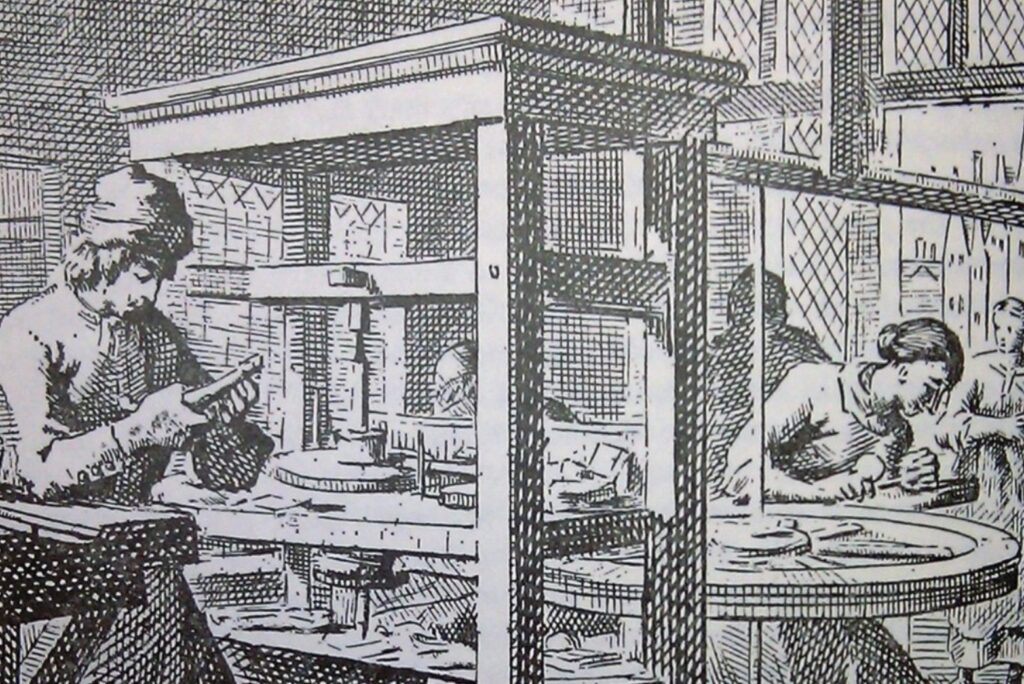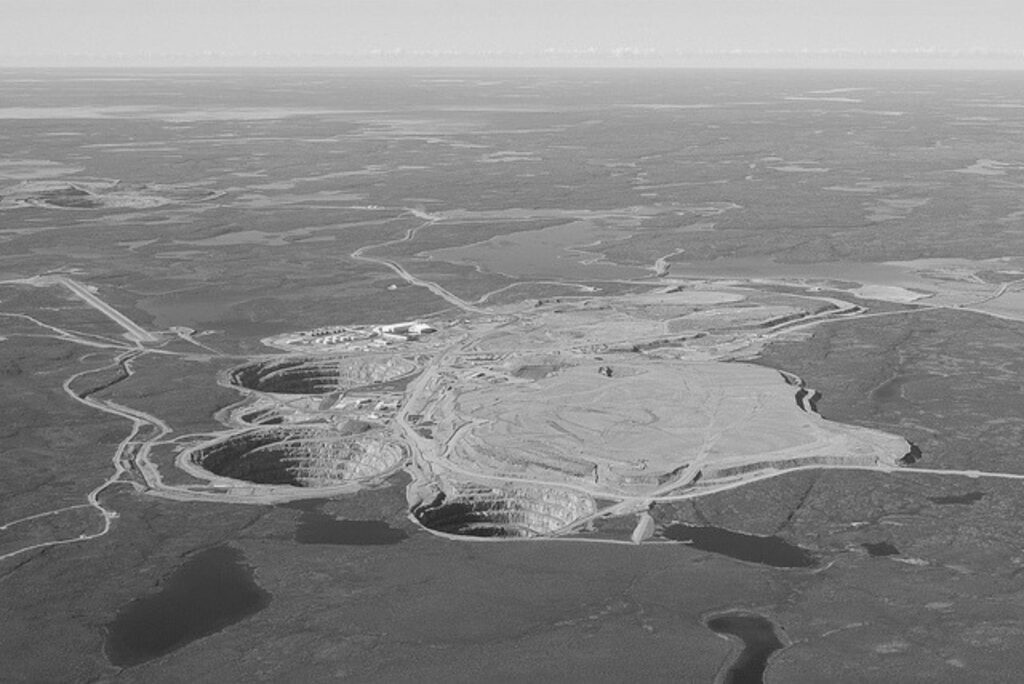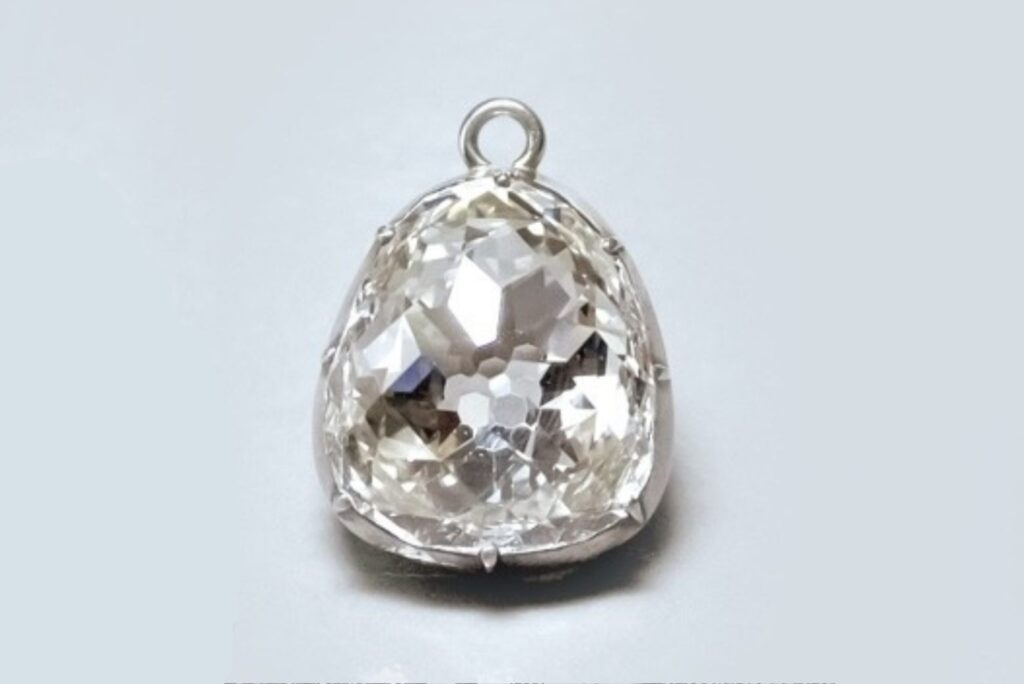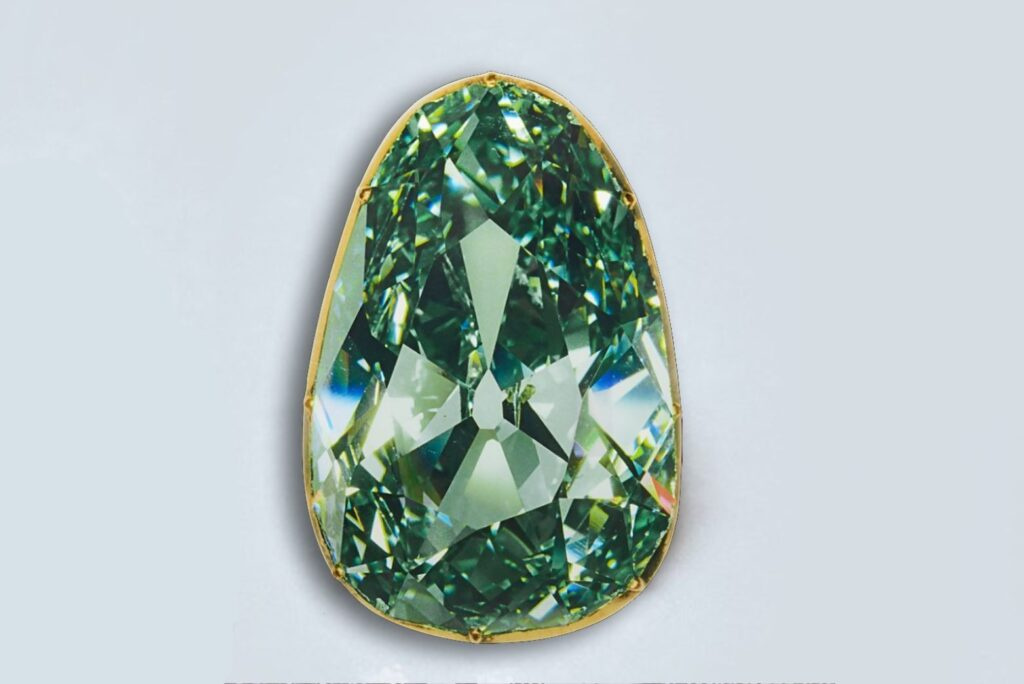STIG Lexicon
India, and to a lesser extent Borneo, were the only source of diamonds until
about 1730, when Brazilian deposits were discovered. In India, diamond
was for thousands of years known as a symbol of power and religion. Most
Indian diamonds were mined in alluvial deposits along rivers over many centuries.
Diamond was also highly regarded as a symbol of strength and wisdom in
Buddhism. The Ratnapariksha of Buddhabhatta, a 6th-century Sanskrit
lapidary treatise states: “[The one] who wears a diamond is protected against all dangers, be it by serpents, fire, poison, sickness, thieves, or evil spirits.


18th Century
In the 18th century, when the Indian diamond mines declined, new and important diamond deposits were found in the states of Mato Grosso, Minas Gerais, Roraima, and Bahia in Brazil. After 1860, Brazilian diamond production rapidly declined, resulting in a great shortage of rough diamonds in the European cutting centres. After the discovery of South African deposits in 1870, production in Brazil nearly ceased.
South Africa was a powerhouse of diamond production, and deposits were discovered in other countries on the African continent during the 20th century. A lot of the mining and trading activities were linked to De Beers and its associated trading arms Diamond Trading Company (DTC) and Central Selling Organisation (CSO).
The end of the 20th century saw new countries as major producers. In the space of a few years, Russia, Canada, and Australia became some of the most important sources for diamonds worldwide.
This section covers some of the most famous diamond gemstones, both of
historical significance and more recently sold at auction.

The Beau Sancy
The first royal owner of the Beau Sancy was Marie de Médicis (second spouse of King Henry IV of France) who, after the King passed away, became regent of the Kingdom of France in 1610. In 1604, Marie de Médicis acquired the Beau Sancy from a diplomat and financier named Nicholas Harlay de Sancy – hence the diamond’s name. The Beau Sancy is also known in France as the ‘Petit Sancy’, as there is another diamond called the Sancy, which weighs 55.23 carats and is to be found in the collection of the Louvre in Paris.


Dresden Green diamond
The Dresden Green diamond is a 41 ct diamond that was mined in India and brought to Europe at the beginning of the 18th century. It is one of the most famous coloured diamonds in the world, and an exceptional example of a naturally green-coloured diamond. August III of Saxony bought the diamond in 1741 and had it mounted. It was remounted in 1768 into a new design of a hat brooch in which it is still found today. The Dresden Green diamond was named after the capital of the German state of Saxony and can be seen in the historic Green Vault of the Staatliche Kunstsammlungen in Dresden.

What you've always wanted to know about diamonds...
How much does a diamond cost?
The average price people pay for a 1-carat diamond in jewelry is around €6,000 – €9,000. However, the price for a 1-carat diamond of the very best quality – depending on its condition and overall quality – is currently about €30,250. The reference price for a 1-carat diamond of the very best quality and clarity for a one-carat diamond with exactly 1.00 carat is currently $30,178 USD, or in other words, the 1-carat diamond has a value of $30,178 USD. Diamonds are generally traded in US dollars on international diamond exchanges. Therefore, the price of diamonds in euros fluctuates depending on the current US dollar to euro exchange rate (similar to the price of oil).
What are diamonds made of?
Diamond consists exclusively of pure, cubically crystallized carbon. Diamond is the hardest natural material. It has a hardness of 10 on the Mohs hardness scale. Its grinding hardness according to Rosiwal (also absolute hardness) is 140 times greater than that of corundum. However, the hardness of 1 diamond varies in different crystal directions. This makes it possible to grind diamond with diamond. In the diamond powder used for this purpose, the crystals are in every orientation (statistical isotropy), so that the hardest 2 ones among them always act on the body to be ground.
The important 4C's
COLOR
Diamonds exist in a wide range of colors. They can be found in yellow, red, green, blue, brown, and even black. However, the vast majority are colorless to near-colorless gemstones. For these, the GIA (Gemological Institute of America) has developed an internationally recognized grading scale. It ranges from the top quality River D and River E to the noticeably tinted hue Z. In a slightly coarser subdivision, the individual letters are grouped into six categories.
CUT
A brilliant-cut diamond has at least 32 facets in the crown plus the table, then the girdle follows, and at least 24 facets in the pavilion. In total: 56 facets. Only diamonds cut in this way may be called brilliant.
The classification of the cut in terms of its quality is as follows:
Excellent – very good – good – fair – poor
The tip of the brilliant is called: culet
CLARITY
The clarity of a diamond is divided into many individual grades. In a well-cut diamond with good proportions, light is reflected from one facet to another and then radiates back through the top of the stone. The grades are: FL, IF, VVS1, VVS2, VS1, VS2, SI1, SI2, I1, I2, I3. The term P (Piqué) is also used (in the jewelry sector): this means: P1 = Piqué 1. Inclusions, easily visible to the naked eye, slightly reduce the brilliance. P2 = Piqué 2. Inclusions, very easily visible to the naked eye, significantly reduce the brilliance.
CARAT
Since 1912, the weight of diamonds (and other precious stones) has been measured in carats. 1 carat is equivalent to 0.2 grams. If all other parameters (see left/below) are equal, then diamonds with a higher carat weight are significantly more valuable than stones with a lower weight. This is due to the fact that larger diamonds with flawless properties (color, clarity, inclusions) are very rare and less frequently found.
It is important to know that the unit carat only indicates the weight, but not the size of the diamond. Therefore, a two-carat diamond is not automatically twice as large as a one-carat diamond, even though it weighs twice as much.
